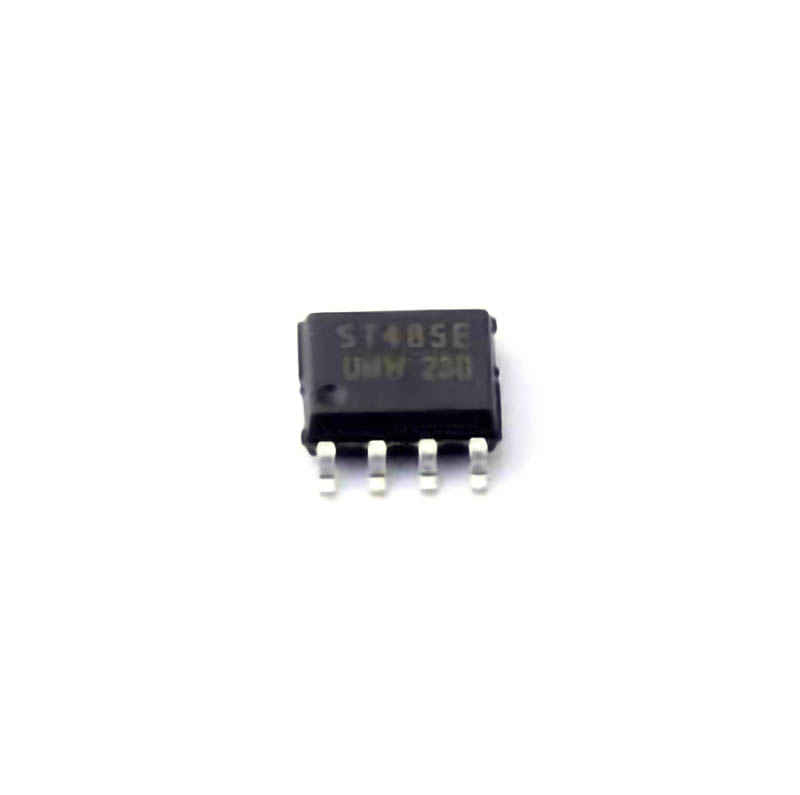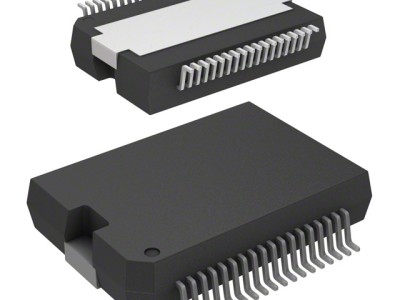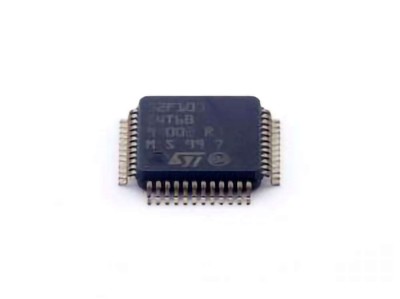
Understanding Common Issues with ST485EBDR
The UMW ST485EBDR is a versatile RS-485 transceiver widely used for long-distance Communication in industrial systems, PLCs (programmable logic controllers), and data acquisition applications. Though robust and reliable, the ST485EBDR is susceptible to specific issues that can hinder performance. If you’re facing problems with data transmission, communication errors, or poor signal quality, this article will guide you through the common troubleshooting steps and solutions.
1. Poor Signal Quality or No Data Transmission
One of the most common issues with RS-485 transceivers like the ST485EBDR is poor signal quality or a complete lack of data transmission. This can manifest as intermittent communication or complete failure of the transceiver to send or receive data.
Potential Causes:
Incorrect Termination: The RS-485 bus should be properly terminated to avoid signal reflections that could degrade the data transmission. Without proper termination, the signal may bounce back along the bus, causing corruption.
Bus Length Issues: RS-485 communication is designed for long-distance transmission, but the cable length can affect performance. If the cable length exceeds the recommended limits, you may experience signal degradation.
Impedance Mismatch: A mismatch in the impedance of the cable and the transceiver can lead to signal loss or reflections.
Solutions:
Add Terminators: Ensure that the correct termination resistors (typically 120 ohms) are placed at both ends of the RS-485 bus.
Check Cable Length: Verify that the total length of the RS-485 bus does not exceed the manufacturer’s recommended limits (usually 4000 feet or 1200 meters for low-speed transmission).
Use Proper Cable: Use twisted-pair cables with a characteristic impedance of 120 ohms to minimize reflection and signal loss.
Review Device Loading: Avoid overloading the RS-485 bus with too many devices, as this can reduce the quality of the signal.
2. No Power Supply or Low Voltage
If your ST485EBDR seems completely unresponsive, a lack of power supply or an insufficient voltage could be the root cause.
Potential Causes:
Incorrect Power Supply: Ensure that the power supply voltage matches the required specifications for the ST485EBDR (typically 5V or 3.3V, depending on the version you are using).
Power Source Instability: Voltage fluctuations or noise in the power supply can cause the transceiver to malfunction.
Solutions:
Verify Voltage: Use a multimeter to check the voltage supplied to the ST485EBDR. Confirm it matches the transceiver’s specifications.
Stable Power Source: Ensure the power supply is stable and free from voltage spikes or noise that could affect the performance of the transceiver. Consider using a regulated power supply if needed.
Check Grounding: Improper grounding can cause fluctuations in the supply voltage. Verify that the grounding of the power supply and transceiver are correct.
3. Signal Interference and Crosstalk
RS-485 communication systems are susceptible to electromagnetic interference ( EMI ) and crosstalk, especially in environments with high electromagnetic noise, such as factories or near large motors.
Potential Causes:
Electromagnetic Interference (EMI): This can occur when nearby electrical devices emit radiation that interferes with the signal on the RS-485 bus.
Cable Routing Issues: The placement of cables in high-interference areas can pick up noise and lead to data transmission issues.
Unshielded Cables: If the RS-485 cables are not shielded, they may pick up external noise that corrupts the signals.
Solutions:
Use Shielded Cables: Use twisted-pair cables with shielding to reduce the impact of EMI.
Proper Cable Routing: Route RS-485 cables away from high-power cables, motors, or other sources of EMI. If running cables near sources of interference is unavoidable, consider using conduits or raceways to shield the cables.
Grounding: Ensure proper grounding of both the RS-485 transceiver and the cables to reduce noise and crosstalk.
4. Device Communication Conflicts
Another common issue in a multi-device RS-485 setup is communication conflicts between devices. If multiple devices are trying to communicate at the same time, this can result in data collisions.
Potential Causes:
Bus Contention: RS-485 allows multiple devices to share the same communication bus, but without proper Management , devices may attempt to send data simultaneously, causing conflicts.
Address Conflicts: In some cases, devices may be assigned the same address, leading to conflicts in data transmission.
Solutions:
Bus Arbitration: Implement bus arbitration mechanisms to ensure that only one device transmits at a time. Some systems use protocols that allow for proper time slots for each device to send and receive data.
Check Address Settings: Ensure that all devices connected to the RS-485 bus have unique addresses. Conflicting addresses can cause communication errors and data corruption.
Advanced Troubleshooting and Additional Solutions
While basic troubleshooting steps can solve most common issues with the ST485EBDR, there are some more advanced strategies to address persistent problems. In this section, we will explore additional solutions and techniques to ensure reliable operation of the ST485EBDR in complex applications.
5. Faulty Wiring and Connection Issues
Faulty wiring or loose connections are a common problem in any electronic system, and RS-485 communication is no exception. If you’re experiencing intermittent communication or no communication at all, it’s essential to check the physical connections.
Potential Causes:
Loose Wires: Loose or intermittent connections at the transceiver’s terminals can cause erratic behavior or complete data loss.
Incorrect Pin Connections: Wiring the TX/RX pins incorrectly can prevent proper communication.
Solutions:
Check All Wiring: Ensure that all connections are secure and that wires are correctly routed according to the ST485EBDR pinout and schematic.
Use Quality Connectors : Poor quality or damaged connectors can lead to intermittent signal loss. Use high-quality connectors to ensure a solid, long-lasting connection.
Inspect for Shorts: Check for potential shorts between wires, particularly when multiple devices are connected to the same bus.
6. Thermal Issues and Overheating
In certain operating conditions, overheating can cause the ST485EBDR to behave unpredictably or even fail entirely.
Potential Causes:
Excessive Current Draw: Drawing too much current through the transceiver can cause it to overheat.
Environmental Factors: High ambient temperatures in an industrial setting can exacerbate thermal issues.
Solutions:
Heat Management: Ensure that the transceiver is operating within its specified temperature range (typically -40°C to +85°C for the ST485EBDR). Use heat sinks or fans if necessary to keep the temperature down.
Power Consumption: Review the current consumption of your system and ensure it falls within the transceiver’s limits.
7. Software and Firmware Issues
In some cases, communication problems can stem from issues within the software or firmware of the devices communicating over RS-485.
Potential Causes:
Incorrect Baud Rate or Protocol Settings: Misconfigured baud rates, parity settings, or stop bits can cause communication errors.
Firmware Bugs: If the firmware running on the microcontroller or device is buggy, it may fail to correctly manage communication.
Solutions:
Check Communication Settings: Verify that the baud rate, parity, stop bits, and other protocol settings are consistent across all devices in the RS-485 network.
Update Firmware: Ensure that all devices involved in the communication have the latest firmware updates to fix any bugs or glitches related to communication.
8. Advanced Tools for Troubleshooting
When basic troubleshooting fails to resolve the problem, it may be time to use advanced diagnostic tools to pinpoint the issue.
Solutions:
Oscilloscope: Use an oscilloscope to monitor the waveform of the RS-485 signal and detect issues such as voltage spikes, reflections, or signal degradation.
RS-485 Protocol Analyzer: An RS-485 protocol analyzer can help you capture and decode the communication signals, providing a detailed analysis of what’s happening on the bus.
By following these troubleshooting steps, you can effectively address common issues with the ST485EBDR and ensure reliable performance in your RS-485 communication system. Whether you’re facing signal quality issues, wiring problems, or software-related bugs, these strategies will help you maintain stable communication in your industrial or commercial applications.
If you're looking for models of commonly used electronic components or more information about ST485EBDR datasheets, compile all your procurement and CAD information in one place.
( Partnering with an electronic component supplier) sets your team up for success, ensuring that the design, production and procurement processes are streamlined and error-free. (Contact us) for free today.


